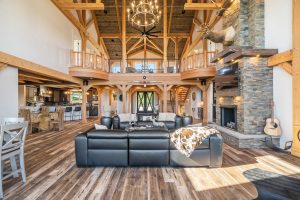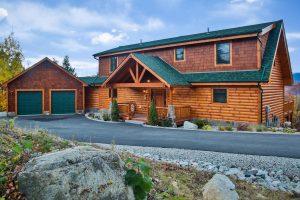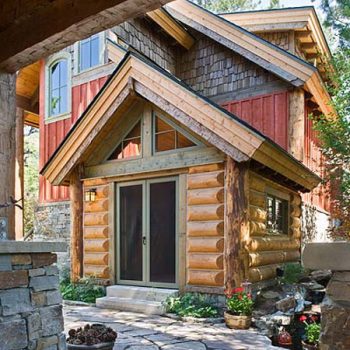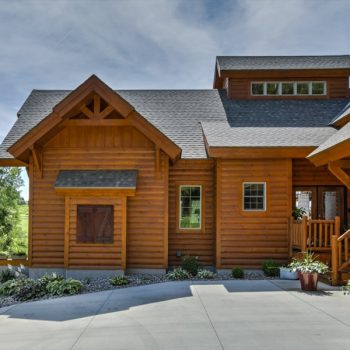
The Definitive Guide to Building a Log Cabin Home from the Ground Up
- On August 1, 2024
Building a log cabin home is a dream for many homeowners. This definitive guide will walk you through every step, detailing everything from floor plans and woodworking to the final chinking and notching.
Selecting Quality Logs for Your Cabin
Choosing the right type of logs is crucial in the construction process. Quality logs like white pine are highly recommended. They provide durability and aesthetics to your log home.
Four Key Considerations When Choosing Quality Logs:
- Climate and Locale: Think about the climate and location where your log cabin will be constructed. In regions with colder climates and severe winters, thicker wall logs can enhance insulation and help keep the interior warm.
- Insulation Needs: Thicker wall logs provide superior insulation properties. For a garden office used throughout the year, thicker logs are essential. If your log cabin will be occupied year-round, particularly in extremely hot or cold climates, choosing thicker logs will lead to better energy efficiency and thermal comfort.
- Visual Appeal: Thicker wall logs lend a more substantial and rustic look to your cabin. If you’re aiming for a traditional and authentic appearance, thicker logs could be the right choice.
- Structural Integrity: Generally, thicker logs offer more structural strength. Take into account the size of your cabin and the load it needs to support. Thicker logs are more capable of supporting larger structures and heavier roofing materials.
- Cabin Dimensions: The size of your cabin plays a role too. Smaller cabins may do well with thinner logs, while larger cabins could benefit from thicker logs for increased stability and durability.
Crafting Your Dream Log Cabin
Custom log homes allow for personalization in every aspect, from the gables to the decking. Whether you go for an A-frame style or a more traditional layout, skilled log home builders ensure that your vision comes to life.
Understanding Floor Plans and Sq Ft Needs
Deciding on floor plans for your log house is one of the first steps. Consider how many square feet (sq ft) you’ll need and if a small log cabin or a larger wooden house suits your needs.
The Importance of Proper Notching and Chinking
Notching techniques and chinking are vital for maintaining the integrity of your cabin. These elements work together to ensure that your log walls are solid and weather-resistant.
Tools and Methods: Chainsaw vs Hand Tools
Both chainsaws and hand tools play essential roles in building a log cabin. For detailed craftsmanship, hand tools are preferable, while chainsaws make quick work of larger tasks like cutting joists.
Prefab vs Custom-Built Log Homes
Both prefab log home kits and custom builds have their benefits. Prefab options offer convenience and quicker assembly, whereas custom builds allow for unique features tailored to your preferences.
Staying Within Building Codes
Adhering to building codes is non-negotiable when it comes to constructing your log cabin home. These regulations ensure safety and durability throughout the construction process.
Off-Grid Log Cabin Considerations
An off-grid log cabin offers unparalleled tranquility but requires careful planning. Ensure that you account for all utilities and resources needed to live comfortably off the grid.
Final Touches: Decking, Shingles, and More
As you near completion, features like decking and shingles add the finishing touches to your dream home. Each element reflects the craftsmanship invested throughout the building process.
This comprehensive guide aims to equip you with all the necessary information for building a stunning log cabin home that meets both your practical needs and aesthetic desires.
Contact us at 800-970-2224 and let’s build the log cabin you’ve always wanted.





0 Comments